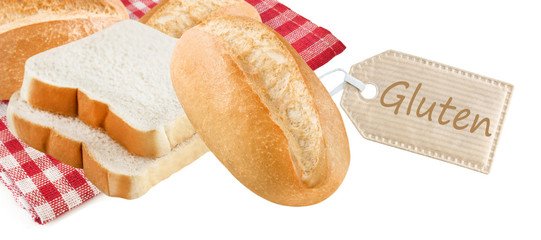One question that is starting to rear its head is this: What is the connection between gluten intolerance and Candida overgrowth. Why is this question being asked now? Because studies are showing that Candida overgrowth and Gluten intolerance appear to be showing up together.
If you are concerned that Gluten intolerance might be connected with your frequent vaginal infections or oral thrush, visit the professionals at Balanced Care and find the answers, and help, you are looking for.
Treating candida overgrowth is only part of the problem. Eating gluten-free snacks without knowing if gluten is the issue is a waste of time. Read on and see what naturopathic doctors are doing to find the connection and treat their patients, naturally, for gluten intolerance and Candida overgrowth.
Below you will read what one naturopathic doctor, or ND, does when he begins to work with a client who is having problems with Candida overgrowth.
Gluten Intolerance and Candida: What’s the Connection?
One of the first things I do when treating patients with Candida is put them on a strict anti-fungal diet. The goal is to restore immune function while eliminating any potential allergens, later adding foods back one at a time to find out which cause reactions. It’s not too surprising to find that a lot of my patients, while struggling to treat their yeast infections, also become gluten intolerant.
Why Do Gluten Intolerances Develop in Patients with Candida?

As you already know, a wide variety of commonly used grains – like barley, wheat, rye, oats, and spelt, (amongst others), contain gluten. Gluten is a protein, but it’s one that is very difficult to digest. Therefore, if the intestines aren’t functioning optimally, the process of trying to digest gluten can cause damage to the intestinal tract.
Those who are suffering from Candida already have desensitized immune systems and their intestines are already damaged by the Candida Albicans organism itself. The problem is that the Candida Albicans cell contains a protein that allows it to attach to the cell walls within the intestines.
This protein in Candida is very similar to the protein in gluten. When the Candida cells attach to the intestinal walls, change, and send out new spores, the immune system tries to respond. It not only begins attacking the protein in the Candida cell, but it begins to attack the protein in the gluten cells.
In other words, your immune system eventually gets to the point where it can’t tell the difference between the Candida and gluten proteins. The immune system goes into overdrive and you eventually begin to have allergic reactions to gluten products. Your body then tries to develop an auto-immune response, like celiac disease.
In short, there is always an explanation for relatively healthy people suddenly developing allergies and food sensitivities to items that never, ever bothered them in the past.
Treating Gluten Intolerance and Candida
While treating my clients with Candida, I often ask them to avoid all gluten products. I ask them to instead lean towards safer grains like quinoa, millet, buckwheat, and amaranth. A lot of Candida diet programs stress avoiding all grains, but I find that there are only a few very extreme cases (maybe 2% of all I’ve seen) where avoiding grains altogether is a necessity. As long as you’re avoiding gluten, usually for several months, you should respond well to your anti-Candida regime.
Focusing on Quinoa

If I had to choose one grain for you to focus on, I’d pick quinoa. Quinoa looks like a little white seed and it puffs up a bit when cooked. Unlike most other grains, quinoa is considered a complete protein because it contains all of the essential amino acids your body needs on a daily basis. It’s also a fantastic source of fiber, which is also incredibly important while you’re working to cure your yeast infection.
Quinoa is pretty versatile, too. If you’re cooking it as a grain, you’ll want to wash it thoroughly first to get the soapy saponins off before you cook it. Use a fine mesh strainer or a cheesecloth and run cold water over and through the grains. If you forget, your cooked quinoa may and up tasting pretty soapy.
Quinoa is great served with vegetables, cooked and eaten like you would eat oatmeal, or mixed with beans. You can also get quinoa flour and make your own kinds of pasta.
A lot of my Candida patients find, after completely eradicating their yeast infections, that they are no longer sensitive to gluten. Many go back to eating gluten grains, in moderation, while others simply prefer non-gluten grains for health or preference reasons.
There will be exceptions to the rule, of course, and some people are genuinely allergic to gluten and will have to avoid it forever. You’ll still be amazed at the number of people who can reverse the immune response once their bodies are healed!
Candida Overgrowth Does Not Have to be Forever
As you see, a gluten-free diet can give some relief to the person who is suffering from Candida overgrowth. While removing gluten from your diet may be helpful, making sure the friendly bacteria are at work in your lower digestive system is extremely important.
If you are using prescribe antibiotics, engaging in the use of alcoholic beverages, anxious, or stressed out, it may be time to give the professionals at Balanced Care a call. Health is not about fixing one problem but being healthy and balance physically, spiritually, and emotionally.
If Candida overgrowth is disturbing your life, it’s time to make the call that will give you the health you are looking for.

